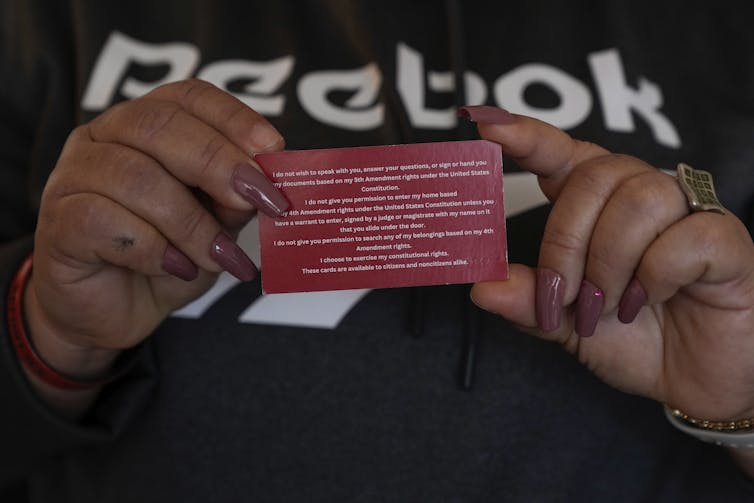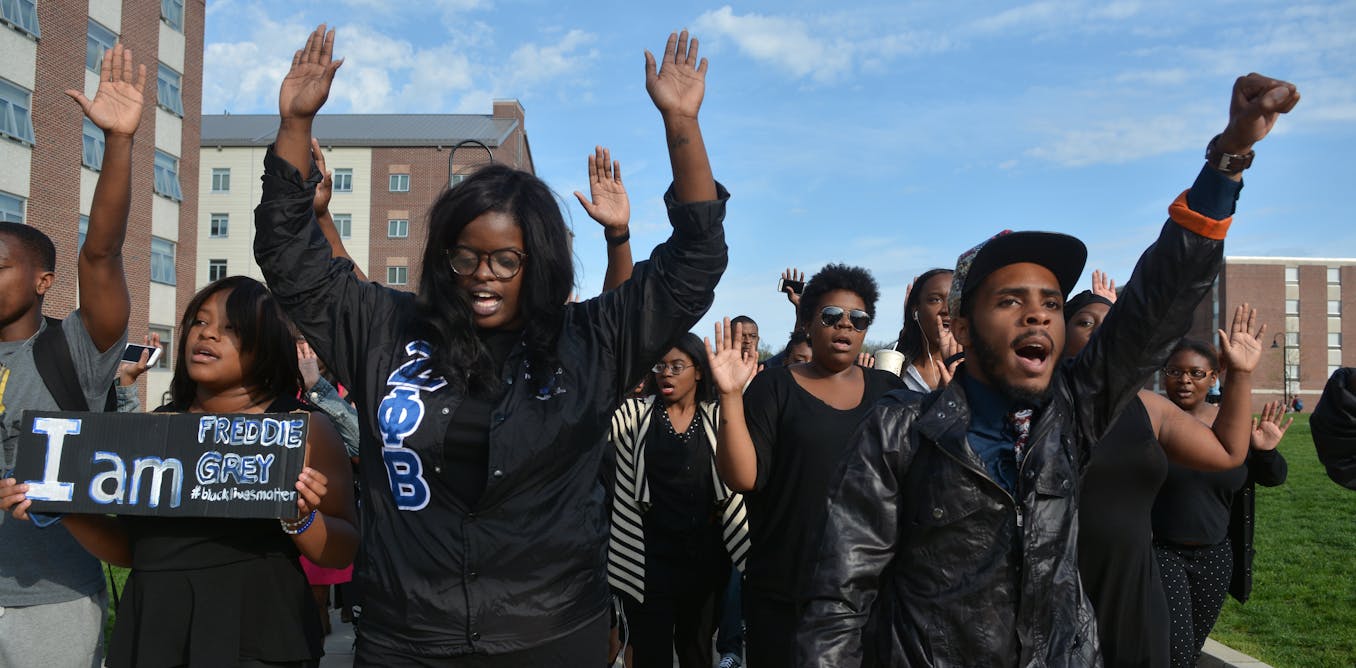United States federal agents tried to enter two Los Angeles elementary schools on April 7, 2025, and were denied entry, according to the Los Angeles Times. The agents were apparently seeking contact with five students who had allegedly entered the country without authorization.
The Trump administration has been targeting foreign-born college students and professors for deportation since February 2025. This was the first known attempt to target younger students since the U.S. Department of Homeland Security in January rescinded a 2011 policy that had limited immigration enforcement actions in locations deemed sensitive by the government such as hospitals, churches and schools.
“Criminals will no longer be able to hide in America’s schools and churches to avoid arrest,” the department said on Jan. 21, 2025.
Roughly 600,000 migrant students without legal status are enrolled in the U.S public education system.
Many K-12 educators are worried that Immigration and Customs Enforcement could start removing students from classrooms. In some places, including New York City, school attendance has decreased over fears that children could be swept up in a raid.
I am a scholar who studies the intersection of U.S. law and the public education system. Under U.S. law, ICE can now legally enter K-12 school grounds. That makes it important for students and schools to understand their rights under the law.
The federal government
Article 1, Section 8, of the U.S. Constitution gives Congress the ability to regulate immigration and “provide for the common defense and general Welfare of the United States.”
This last clause was used following the 9/11 terrorist attacks of 2001 as the constitutional basis to establish the Department of Homeland Security and create ICE as one of its security agencies. ICE enforces over 400 federal statutes dealing with immigration, including the Immigration and Nationality Act of 1952, which allows it to investigate and detain certain noncitizens.
Andrew Lichtenstein/Corbis via Getty Images
This law can place schools and their staff in a potentially conflicted legal position if ICE starts targeting schools, because educators have legal obligations to their students.
Title VI of the Civil Rights Act of 1964 requires public schools to educate every student without regard for their citizenship or immigration status. Meanwhile, residents of all 50 U.S. states have the right to a free and public education under their state’s constitution.
Under the laws governing immigration and ICE’s role in enforcement, educators cannot obstruct an ICE investigation or knowingly hide students.
Laws and court precedents
The U.S. Supreme Court has additionally ruled that students who are not legally living in the U.S. have the same right to an education as any other child.
In the 1975 U.S. Supreme Court decision Plyler v. Doe, the justices struck down a Texas law allowing the state to withhold school district funds for educating children without legal immigration status. The court said the law was unconstitutional because it violated the equal protection clause of the 14th Amendment, which reads in part that no state shall “deny to any person within its jurisdiction the equal protection of the laws.”
Plyler v. Doe asserted that “person” meant just that − a person, not necessarily a citizen.
Around the same time, the Family Educational Rights and Privacy Act was enacted to protect personal student information from release to a third party. That includes law enforcement and ICE, except under three circumstances: the parents consent to the release; a school directory includes student information; or a court orders the school to release the information.
Finally, the McKinney-Vento Homeless Assistance Act says that schools must enroll and educate students who are with unstable living situations, including migrants, without discrimination.
In addition to these federal laws and cases, many states have additional laws that encourage the education of local K-12 students who lack citizenship or residency status. In Michigan, for example, the Elliott-Larsen Civil Rights Act of 1976 prohibits discrimination based on national origin and race in schools, including in admissions and expulsions.

AP Photo/Godofredo A. Vásquez
School districts and ICE
What can K-12 educators do if they find themselves confronting contradictory legal obligations − that of educating all students and that of not impeding a criminal investigation?
Interpreting conflicts in the law is the job of judges − not teachers, ICE agents or academics. The following guidance may help districts prepare for immigration enforcement in K-12 schools:
1. Get ready. Every school district should develop a process and protocol for how to engage with law enforcement in general and ICE specifically.
This plan would involve coordination between the school principals and district superintendent, as well as, most importantly, the district’s lawyers. Traditional school corporate counsel may not have much experience in criminal law; engaging additional counsel with experience in criminal procedures and Fourth Amendment protections can be helpful.
Everyone should understand their role in the plan. Administrative assistants are likely to be the first people engaged when ICE shows up to the school. Do they know what to do?
2. Collect data thoughtfully. There is no state or federal mandate for schools to document citizenship for K-12 school enrollment, though some states are considering requiring proof of citizenship or legal immigration status for enrollment, including Oklahoma, Indiana, Texas, Tennessee and New Jersey.
3. Obey the law. The Family Educational Rights and Privacy Act forbids sharing certain information about students with outsiders, including law enforcement. As a rule, then, staff should always avoid discussing students beyond what they are required to do as a function of their employment. Many school board policies ensure that the information they release publicly about enrolled students is minimal.
4. Understand how warrants work. Just because a school is public does not mean that anyone can just come into a classroom, and that includes the police or ICE. A warrant may not be required to detain or arrest a student on the spot, but law enforcement must produce one to access any nonpublic areas of the school in search of that student. They must also show a warrant to see student records or other information, unless parents have previously consented to this information being shared.
Under exigent circumstances, such as if the public is at risk of imminent harm, a warrant may not be required for police to enter the school.
5. Keep records. If ICE does knock on the schoolhouse door, administrators should be sure to prepare a report, in accordance with school board policies, for the school district’s records that describes everything that happened and retain all documentation.

The post “ICE can now enter K-12 schools − here’s what educators should know about student rights and privacy” by Brian Boggs, Assistant Professor of Policy and Educational Leadership, University of Michigan was published on 04/11/2025 by theconversation.com






































Leave a Reply